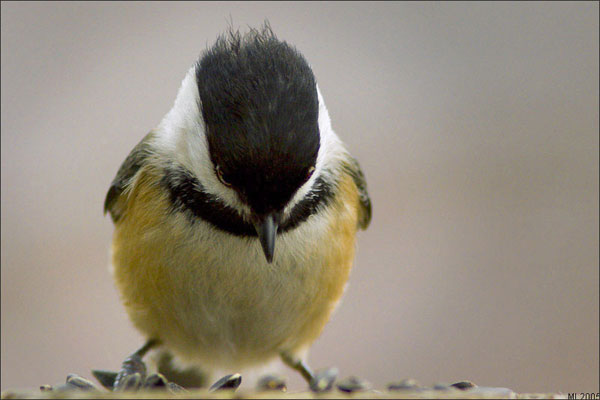Let’s see which one is worthy of my attention…

After 1 and half years of photographing birds in a more exploratory way, I concluded I like the challenge and the satisfaction of capturing birds in their natural environment.
During this time, my backyard became a welcoming landscape for any bird that paid a visit to my feeders or where simply foraging for plant seeds or earth worms.
So, "Seeds Examination" is a direct result of such exploration within the boundaries of my own backyard.
I see it as a funny portrait of a chickadee. "Seeds, eh? Let's see which one is worthy of my attention…"
Further reading on these birds indicated that is exactly what they do. They very carefully choose the plumpest seeds, fly to cover, and consume them by hammering the seeds open.
I suppose it's easy to be so selective when food is plenty. During the winter days however, it's a different story. That is why my bird feeders where always full this past winter.
This raises another question. Why are these birds not migrating to some warmer places?
I was always surprised by the fact that these small and very agile birds resist to such low temperatures. If you've seen a chickadee in parks you've for sure noted the small size of the bird. So how are they actually going through the winter?
Research indicate that they, amazingly enough, go into a state of regulated hypothermia.
Chickadees have a limited ability to gather food during the winter days, thus they conserve energy by lowering their body temperatures from 42 to 30 degrees Celsius. During this state of hypothermia they can actually still escape threats by flying, although with less strength I assume.
There you have it, the chickadee in my backyard that is very critical of my sunflower seeds.